AP PHOTOS: Rivers and fountains of red-gold volcanic lava light up the dark skies in Icelandic town
Rivers of lava spewed from a fissure in the mountainside, snaking downwards and erupting in fountains of red and gold molten rock when the Fagradalsfjall volcano erupted this week near a small fishing town in southwestern Iceland.
The fiery liquid illuminates the smoke-filled sky in Grindavik, just 50 kilometers (30 miles) from the capital, Reykjavik.
The eruption began Monday night, but it was no surprise: The area has been active for two years, with thousands of small earthquakes heralding the near-certain awakening of the volcano.
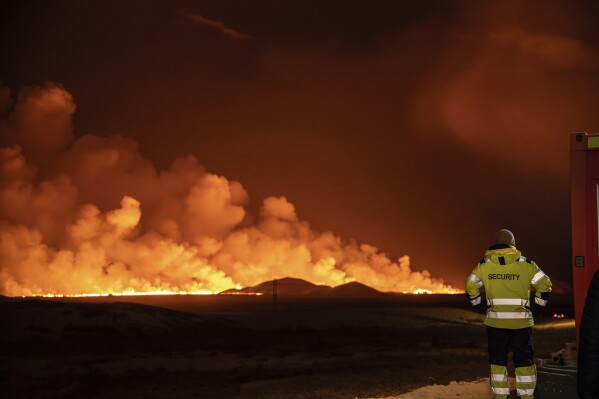
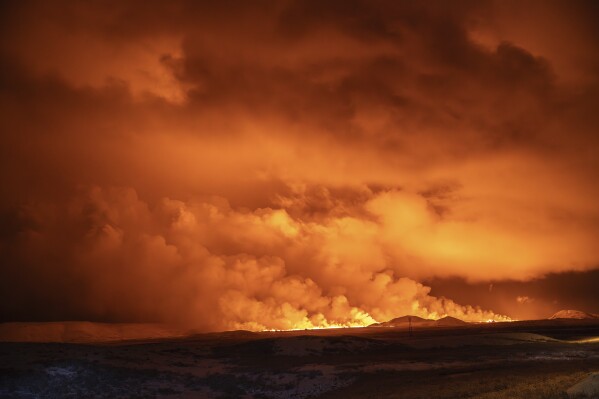
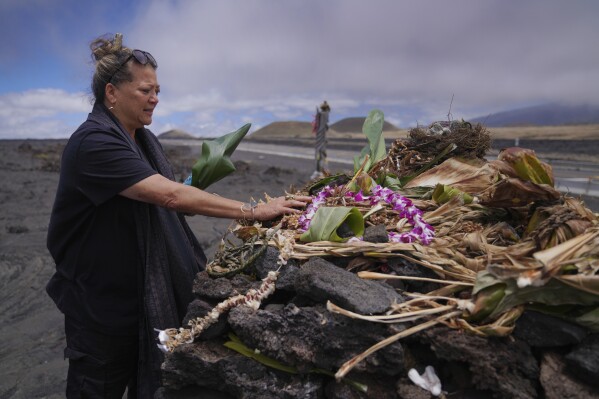
Civil defense personnel are on high alert, blocking access to the road leading to the mountain, and flying in a helicopter over the lava floes to monitor volcanic activity.
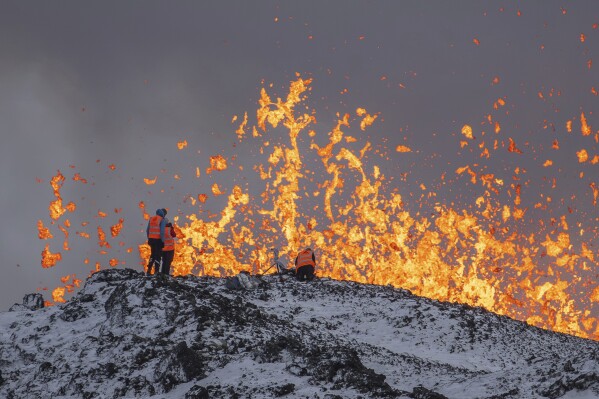
Scientist of the University of Iceland take measurements and samples standing on the ridge in front of the active part of the eruptive fissure of an active volcano in Grindavik on Iceland’s Reykjanes Peninsula, Tuesday, Dec. 19, 2023. (AP Photo/Marco Di Marco)
As Friday’s winter solstice nears — when Iceland sees just three hours of sunlight a day — residents gather, watching from a safe distance, to see the natural spectacle lighting up the long-dark sky.
The lava is about 1,200 degrees Celsius (2,200 degrees Fahrenheit). The Icelandic Meteorological Office estimates that hundreds of cubic meters of lava per second escaped the volcano in the first two hours of the eruption, though the activity had significantly subsided by Tuesday afternoon.
The volcano last erupted in March 2021, but before that had been dormant for 6,000 years.
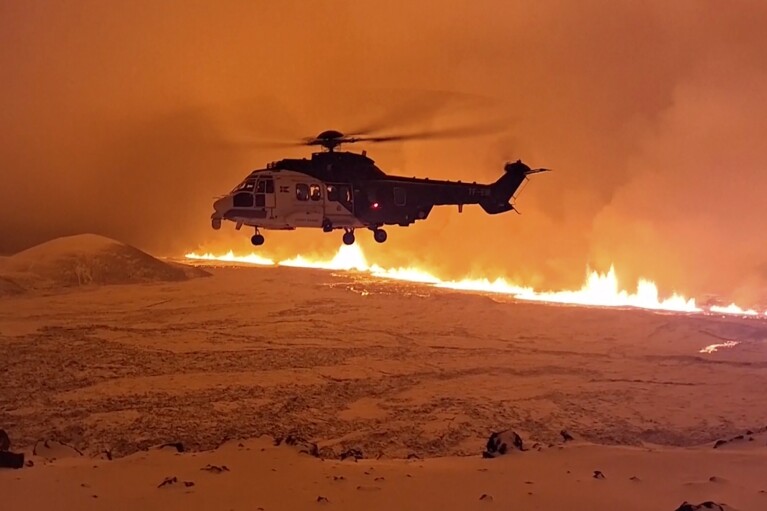
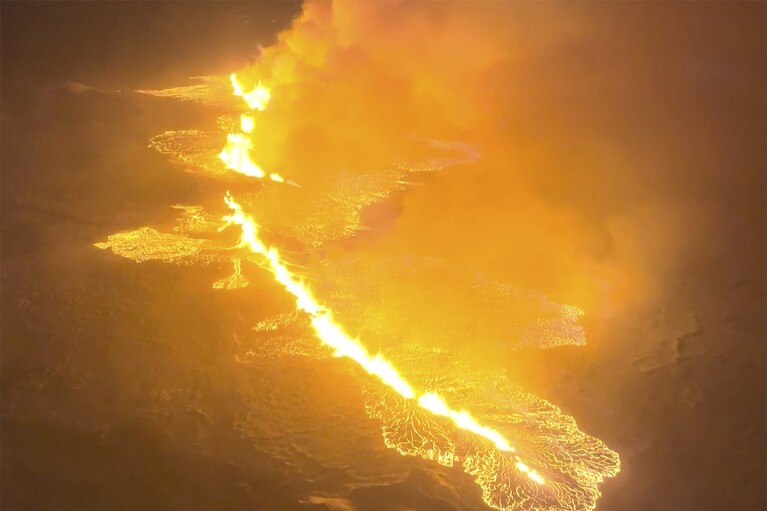
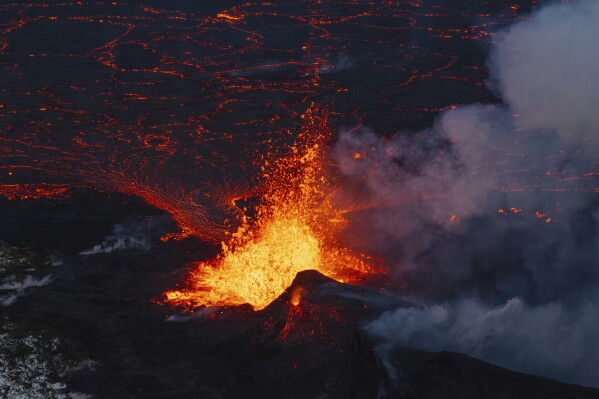
A close up of the Northern active segment of the original fissure of an active volcano in Grindavik on Iceland’s Reykjanes Peninsula, Tuesday, Dec. 19, 2023. (AP Photo/Marco Di Marco)
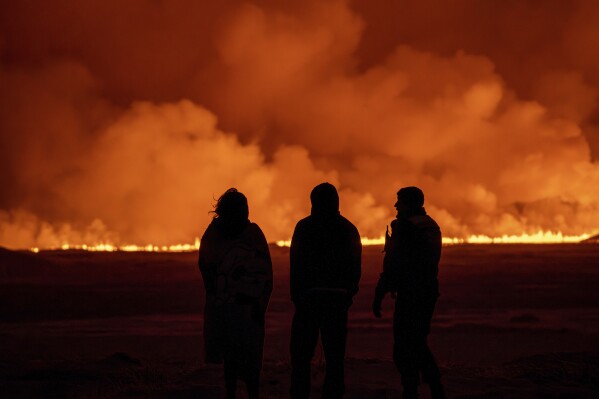
People watch as the night sky is illuminated caused by the eruption of a volcano in Grindavik on Iceland’s Reykjanes Peninsula, Monday, Dec. 18, 2023. (AP Photo/Marco Di Marco)

Aerial view of the Southern active segment of the fissure of an active volcano in Grindavik on Iceland’s Reykjanes Peninsula, Tuesday, Dec. 19, 2023. (AP Photo/Marco Di Marco)
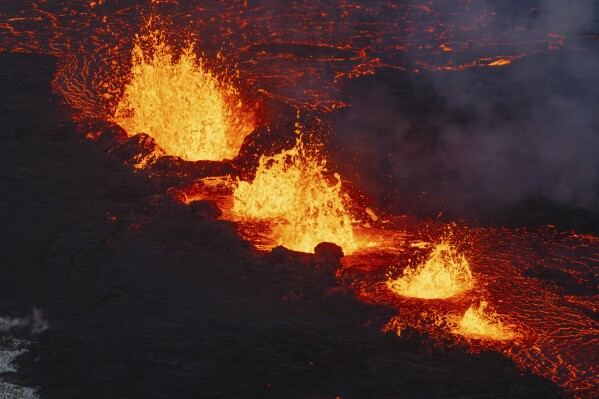
A close up of the Southern active segment of the original fissure of an active volcano in Grindavik on Iceland’s Reykjanes Peninsula, Tuesday, Dec. 19, 2023. (AP Photo/Marco Di Marco)
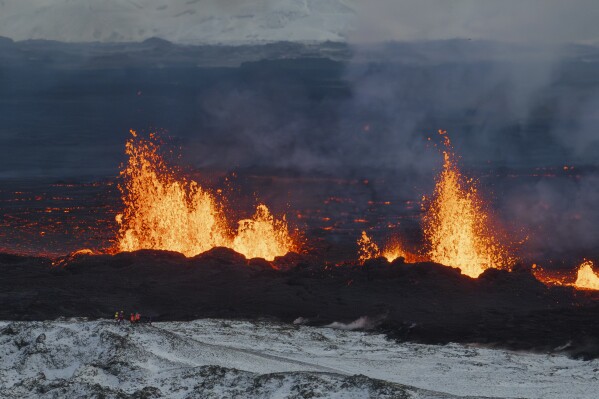
A close up of the Southern active segment of the original fissure of an active volcano in Grindavik on Iceland’s Reykjanes Peninsula, Tuesday, Dec. 19, 2023. (AP Photo/Marco Di Marco)
Disclaimer: The copyright of this article belongs to the original author. Reposting this article is solely for the purpose of information dissemination and does not constitute any investment advice. If there is any infringement, please contact us immediately. We will make corrections or deletions as necessary. Thank you.


